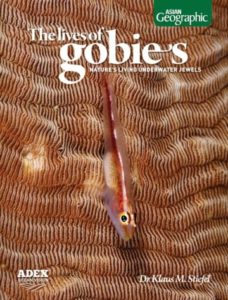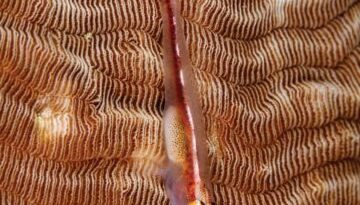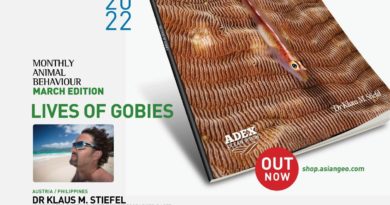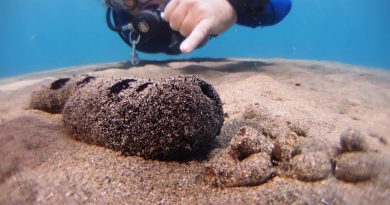Toxic Goby-linity and A New Goby
News from the world of gobies: In this very interesting new paper, a group of researchers led by Ryohei Tatsuno investigate the ability of the goby Yongeichthys criniger to retain tetrodotoxin.
Tetrodotoxin gets its name from the Tetradontidae, the puffer fish, and is the toxin found in the famed Japanese “fugu”, the fish which will paralyze and kill you if the fish is improperly prepared and the toxin-containing tissues are not properly removed. I’ve had fugu in Japan, it’s actually kind of bland tasting, a bit like a flounder. The treat is the thrill of eating a highly toxic fish…
So, these Yongeichthys criniger gobies accumulate tetrodotoxin, and this will protect them from being eaten. What the scientists investigated is how long the toxin remains in the bodies of these gobies. The gobies accumulate the toxin in muscle, eggs and testis. The gobies, when kept in a fish tank without tetrodotoxin in their food, eliminated it from their bodies in about 2 months. To remain toxic, they need to eat the toxin on a regular basis.
Interestingly, in the puffer fish tetrodotoxin (TTX) is bound by a specialized protein, the pufferfish saxitoxin and TTX-binding protein (PSTBP). The gobies seem to have a similar protein, albeit of smaller size. This would be a case of convergent (independent) evolution of such a protein, since gobies and pufferfishes are not closely related.
Yes, if you eat too many of these fish you’ll probably get really sick or die. Yes, the word “toxic” had a meaning, and a much more concrete one at that, before the word experienced an inflation of meaning in present-day newspeak to now refer to something diffusely unfriendly.
The only shot of a Yongeichthys which I have (Y. nebulosus):
A New Trimma
More goby news: A team from Canada and Hawaii found a new species of Trimma. Trimma are small, bottom-living gobies which are very species-rich in the tropics of the Indo-Pacific. The new species, Trimma panemorfum, was found in at Uchelbeluu Reef in Palau in 91 meters.
I have previously photographed undescribed species of Trimma at somewhat deeper depths (> 60 m), like this Trimma meranyx before it was officially described, by Winterbottom as well:
Brown Shore Goby: Rare
Last week I came across a rather rare goby, Drombus sp. (many thanks to Helen Larson for the ID!), which I had not seen in Dauin before, during many years of diving here. The fish was living in the odd cyanobacterial slime which we sometimes get on the sand at slightly deeper depths (> 15 meters). The slime comes and goes, I don’t believe it’s a sign of pollution which is very limited in Dauin. Rather I think that cyanobacteria do well in low-light conditions, and they don’t have to compete with algae or corals in the sand, which provides a poor base for a lot of benthic fauna and flora to attach. The cynao slime is quite a rich micro-habitat for a lot of critters, more on it soon!
Here and here is good info on Drombus sp. It’s a shrimp-associated goby.
This is the footage I got of the Drombus sp. goby:
The Lives of Gobies
If you are interested in gobies, please check out my book on the small but fascinating fishes. Lots of ace goby photos, and an introduction to goby biology written for the interested layperson, not dumbed down, but no scientific jargon. It will be released in the next few weeks:
References
Tatsuno, R., Shikina, M., Yamamoto, Y., Kanahara, Y., Takatani, T., & Arakawa, O. (2022). Tetrodotoxin Retention in the Toxic Goby Yongeichthys criniger. Journal of Marine Science and Engineering, 10(2), 191.
Winterbottom, R., & Pyle, R. L. (2022). A new species of Trimma (Pisces: Gobiidae) from the deep reefs of Palau, western Pacific Ocean. Zootaxa, 5094(4), 595-600.




